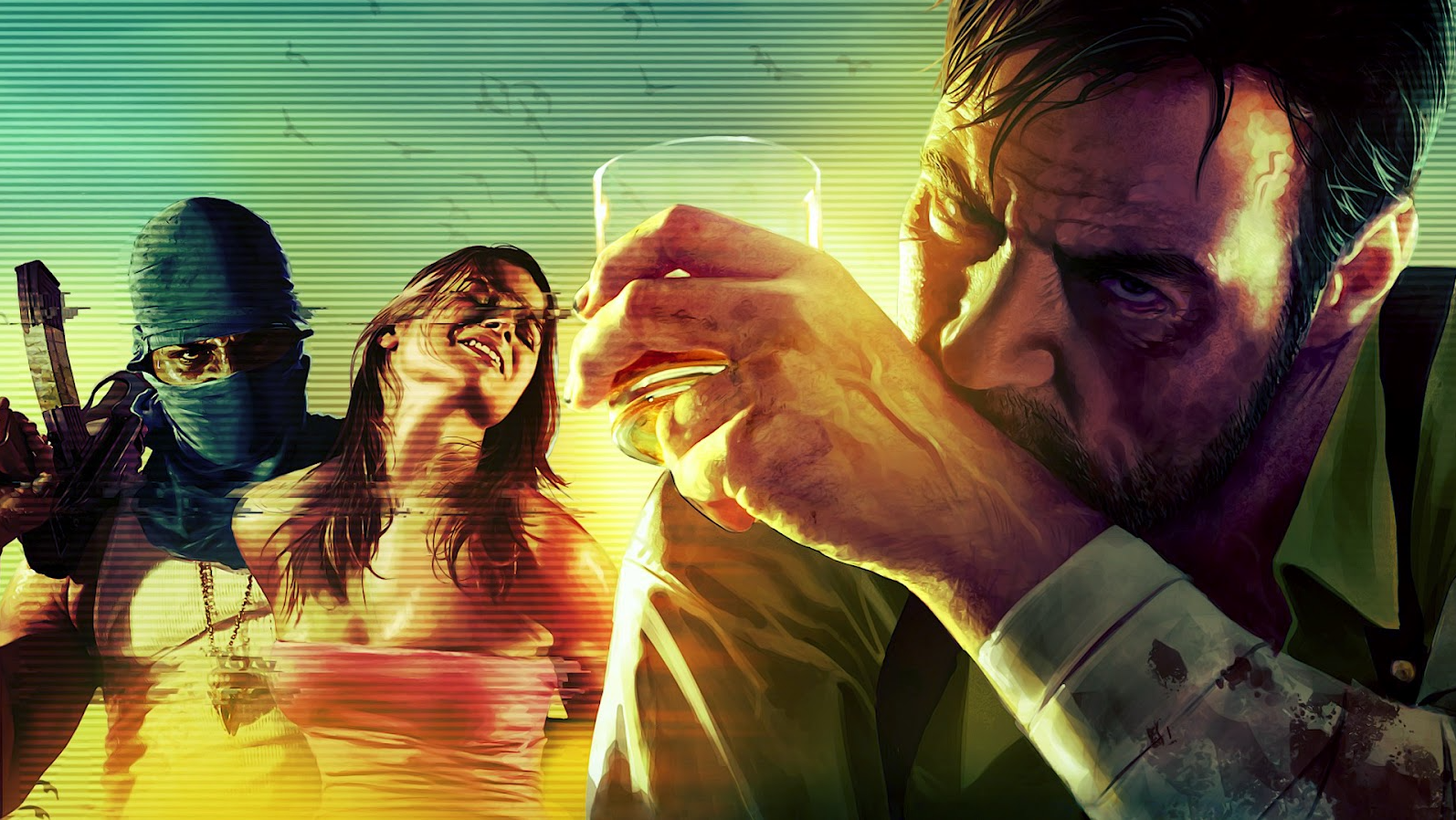The Beauty in Max Payne 3’s Ugliness
There is much to like about Max’s harrowing journey in São Paulo

Max Payne 3’s juxtaposition of a gritty setting, a grim story, and an enthralling bullet ballet ultimately made it an excellent third-person shooter.
Max Payne 3 is one of the most overlooked entries among Rockstar Games’ pantheon. Its relative anonymity was thanks to its awkward 2012 release date between two blockbuster Rockstar releases — Red Dead Redemption (2010) and Grand Theft Auto V (2013) — drowning it out with the popularity of its open-world peers.
For those unfamiliar with the plot of the game, the story takes place eight years after the second instalment. The titular hero has become a bodyguard to wealthy São Paulo businessman, Rodrigo Branco. After his employer’s wife is kidnapped, Max sets out on a journey to rescue her from the city’s criminal underworld — only to be entangled in a dark conspiracy himself.

Welcome to São Paulo
The setting is one highlight of the game. Rockstar has done a great job of bringing the Brazilian city to life. It’s bright, vibrant, and colorful. Yet there is another layer to it. There is rot underneath this Brazilian municipality, even when it’s not outwardly there for players to see.
The game allows Max to interact with a diverse cast of locales. Each oozes with personality and a unique story to add to this multi-layered world. Be it the bright lights or the dark corners of São Paulo, each nook and cranny feels authentic, even if the game’s rendition of the city is fictional.
The environment becomes a storytelling tool of its own, showing the city’s woes rather than explicitly telling.

For example, take the luxurious opening levels. Both the penthouse party and nightclub rave convey an air of vanity and glamour. Socialites partying over the backdrop of a city suffering from various social issues. It’s only when the street gang, Comando Sombra, intrudes into this glamorous scene that Max and players see the violent overlap between these two different social realities.
“Look at me, I’m standing in a nightclub, listening to music I can’t stand. I’m five thousand miles from home. I’m armed and I’m drinking. You don’t want to listen to advice from me, amigo.” (Chapter 2)
Following the glamorous opening levels, players get to experience the flip side of the São Paulo only alluded to in the previous stages. Here Max gets down to the nest of the social issues found in the game’s setting, namely high levels of poverty and crime. Levels taking place in the fictional Nova Esperanca favela are chock-full of detailed depictions of urban decay and terrible living conditions people have been forced to live in.

Besides the contrast between these different settings within the city, there is a deliberate sense of unwelcoming and isolation in Max’s journey: São Paulo is a land foreign to Max, as he is a foreigner to the locals.
As Max, players cannot understand the world around them properly because of the lack of English translations of the local Portuguese dialogue. It’s not even provided via subtitles. As inconvenient as this aspect is to non-Portuguese speaking players, it plays well into the fact that Max is almost always alone, desperate, and lost.
It only gets worse from there as Max encounters more horrors in his journey: the Unidade de Forças Especiais (UFE) special police unit taking bribes and shooting down civilians, people getting snatched off the favela alleyways, and Max discovering the missing people as subjects to an organ theft ring. Every step of the way, Max peels off a nasty layer of São Paulo’s underworld only to find an even nastier layer. It is an ugly experience, albeit being one that is told well.
“My problem? My problem? Wanna know what my problem is? You’re turning humans into glue! That’s what my fucking problem is!” (Chapter 12)
Digging Into Max
What about the story of Max’s internal struggles? Just like the world around him, it is not a happy one — even though there is no denying of its masterful execution.
During the more personal parts of the story, players can experience the state of disarray Max is in. The camera distorts frequently and the arrangement on the Max Payne theme song became noticeably more somber throughout the game. Replacing the usual piano arrangement with a gloomy violin arrangement helps in painting Max as a tragic character.

These are subtle ways the developers are showing players how far Max has fallen from grace, not only since the second game but since the opening mission of the first game, where he failed to save his wife and daughter.
“Michelle… I missed her with every part of my being. I hated the world for not killing me with her, and I hated myself for allowing this to happen to her and our little girl.” (Chapter 8)
Just as we see São Paulo at its worst, we see Max in the same miserable state. We see it through this tortuous journey and Max’s internal monologues, all skillfully given life by James McCaffrey. When players see these distinct elements come together in the game, it’s hard not to feel sorry for our protagonist. This is by far the ugliest fall from grace.
This is where Max differs from notable gaming protagonists such as Cloud Strife, Nathan Drake, or even post-TBC diagnosis Arthur Morgan. Even when they constantly fail, most protagonists appear determined, their drive to succeed and achieve their objective glaringly visible in their eyes. Max’s eyes are simply dead inside; here is a wearied, battle-scarred soul going through the motions.
Max’s tired look is a constant throughout the entire game, going beyond its explosive final chapter. He was never determined to achieve his goals in the way seen with the stereotypical protagonists. Rather, this is messy desperation to move on with his life. If he dies in the process, so be it.
“Was it redemption? Not really, it was pathetic desperation and nothing else.[…]The mission was screaming suicide, but I don’t give a damn. At least I’d die being a pain in the ass.” (Chapter 14)

The Bullet Ballet
This should go without saying, but Max Payne 3’s gameplay is simply outstanding. Gunplay, which makes the entire game, is snappy and responsive, further enhanced by a great sound design. It also achieves a striking balance between bloody violence without being unnecessarily over the top with its gore elements. Implementing slow-motion through Max’s signature shoot-dodge skill is augmented by the cinematic last enemy kill-cam and desperate last-stand kills.
It is also worth noting that despite its gruesome presentation, the game does not romanticize violence, unlike 2011's Bulletstorm. Gunfights in public venues always send civilians to a panic (a detail that Rockstar seemed to make sure players hear clearly) alongside Max constantly expressing regret to innocents getting caught in the crossfire.
It’s not just shoot-dodging, however, as Max Payne 3 has plenty of scripted set-pieces that showcased the game’s slow-motion mechanic. The set pieces are in no way overused. Each of them is unique to one another while making the best use of the setting they took place in.
“My judgment is lousy, but my hand is steady.” (Chapter 11)
This is where the game’s contrast between beauty and austerity comes in: despite Max’s superior accuracy depicted in the gameplay, he always gets into the worst situations. This is not because of his decisions, but almost purely because of his terrible luck. The story does not treat him well, the setting does not treat him well, and almost no characters treat him well.
Yet players do not feel less of a badass because of this string of bad luck. It’s all thanks to the fluid and engaging gameplay where players can prove themselves to the game and to Max himself.

The culmination of ugliness and beauty comes into play in the aforementioned final chapter. It’s both equal parts violence and tranquillity, reinforced by TEARS by HEALTH playing during one of these stages. Here, players witness Max in a state never quite seen before in the game: clear-headed and focused despite being submerged in a state of fury.
“So I guess I’d become what they wanted me to be, a killer. Some rent-a-clown with a gun who puts holes in other bad guys. Well that’s what they had paid for, so in the end that’s what they got.” (Chapter 14)
The three key elements of the game — the setting, the story, and the gameplay — coming together creates a beautifully twisted journey of self-closure for the former New York detective. It’s not a pretty sight to behold, but it sure was a worthy one.
By the looks of it, there won’t be another Max Payne game. Although let’s be honest: do we truly need another one? Max Payne 3 serves as an excellent conclusion to the saga and brought the closure that the character desperately needed. It’s high time Max retires — and with what he’s been through, he fully deserves it.
